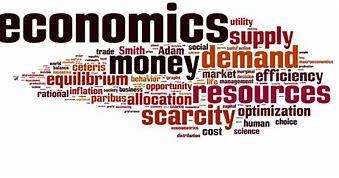
Overview
Economics is divided into two primary categories: microeconomics and macroeconomics. Microeconomics studies individual and business decisions, while macroeconomics analyzes the decisions of countries and governments.
Although these two branches of the economy look different, they are interdependent and complement each other. There are many overlapping issues between the two fields.
Microeconomics
Microeconomics studies the decisions individuals and firms make regarding the allocation of resources and the prices at which they exchange goods and services. Consider government taxes, regulations, and legislation.
Microeconomics focuses on supply, demand, and other forces that determine the price level in the economy. A bottom-up approach is used to analyze the economy. Alternatively, microeconomics seeks to understand human choices and decisions and the allocation of resources.
Microeconomics does not try to explain or answer what forces should act in a market. Instead, try to explain what happens when certain conditions change.
For example, microeconomics examines how a firm can maximize its output and its ability to lower prices and be more competitive. Much microeconomic information can be obtained from company balance sheets.
Microeconomics involves many key principles, including (but not limited to):
Labor economics: this principle analyzes workers and employers and tries to understand remuneration, employment, and income patterns.
Production costs: according to this principle, the price of goods or services is decided by the cost of the resources used in production.
Production theory: this principle studies how goods and services are created or produced.
Supply, demand, and equilibrium: prices are determined by the law of supply and demand. Suppliers offer the same price as consumers demand in an ideal competitive market. This creates an economic balance.
The rules of microeconomics derive from a set of compatible laws and theorems rather than from empirical study.
Macroeconomics
On the other hand, Macroeconomics studies the behavior of a country and how its policies affect the economy as a whole. It looks at whole sectors and economies rather than individuals or companies, so it's a top-down approach. It focuses on answering questions such as "What drives economic growth?" or "What should the rate of inflation be?".
Macroeconomics examines phenomena across the economy, such as GDP (gross domestic product), and how it is affected by changes in national income, unemployment, growth rates, and price levels.
Macroeconomics examines how an increase or decrease in net exports affects a nation's capital account or how the unemployment rate affects gross domestic product (GDP).
Macroeconomics focuses on econometric aggregates and correlations, which is why governments and their agencies rely on macroeconomics to formulate economic and fiscal policies. Investors buying interest rate bonds should pay attention to monetary and fiscal policy.
John Maynard Keynes is often credited with founding macroeconomics because he pioneered the use of monetary aggregates to study large phenomena. Some economists question his theories, while many Keynesians disagree on how to interpret his work.
Can macroeconomic factors affect an investment portfolio?
Yes, macroeconomic factors can have a huge influence on your investment portfolio. For instance, the Great Recession of 2008-2009 and the accompanying stock market crash was caused by the bursting of the United States housing bubble and the subsequent collapse of financial institutions investing heavily in US subprime mortgages.
For another example of the effect of macroeconomic factors on investment portfolios, consider the response of central banks and governments to the pandemic-induced collapse of spring 2020. Governments and central banks released torrents of liquidity through fiscal and monetary incentives to support savings. Avoid the recession, which pushed most equity markets to record highs in the second half of 2020 and through much of 2021.
What is a global macro strategy?
A global macro strategy is a trading and investing strategy that focuses on major macroeconomic events at the national or global level. The "global macro" involves studying and analyzing various macroeconomic factors, including interest rates, currency levels, political events, and relationships between countries.
What is the difference between microeconomics and macroeconomics?
Microeconomics studies how individuals and businesses make decisions to allocate limited resources. Macroeconomics studies an economy as a whole.
How do the fundamentals of microeconomics affect stock prices?
Microeconomic theories such as supply and demand affect stock prices in two ways: directly and indirectly.
The direct effect can be measured by the impact of the supply/demand imbalance on stock market prices. When the demand for an inventory exceeds the supply at any given time because there are more buyers than sellers, the inventory will increase; conversely, when supply exceeds demand because there are more sellers than buyers, the stock decreases.
The indirect effect is based on the demand and supply of the underlying company's products and services. If the company's products were taken off the shelves due to strong demand, it could be on a path of strong earnings, likely driving its stock price higher. But if demand is slow and there is an excess inventory (or supply) of products, company earnings could disappoint, and inventory could crash.
Does the performance of my portfolio depend on microeconomic and macroeconomic factors?
Yes, the performance of your portfolio depends on microeconomic and macroeconomic factors. Microeconomic factors such as taxes and regulations, supply and demand, and macroeconomic factors such as inflation, GDP (gross domestic product) growth, and interest rates significantly influence the various sectors of the economy and hence your investment portfolio.
Summary
Investors use microeconomics in their investment decisions, while macroeconomics is an analytical tool used primarily to design economic and fiscal policies.
Macroeconomics takes a top-down process and looks at the economy as a whole, determining its course and nature.
Microeconomics focuses on supply, demand, and other forces that determine the price level, making it a bottom-up approach.
Microeconomics studies individual and business decisions, while macroeconomics analyzes decisions by countries and governments.
FOR MORE INFORMATION ON HOW CORE PERFORMANCE CAN BEST HELP YOU WITH YOUR TAX FILING NEEDS, PLEASE CLlICK THE BLUE TAB ON THIS PAGE.
THANKS FOR VISITING.
CORE PERFORMANCE